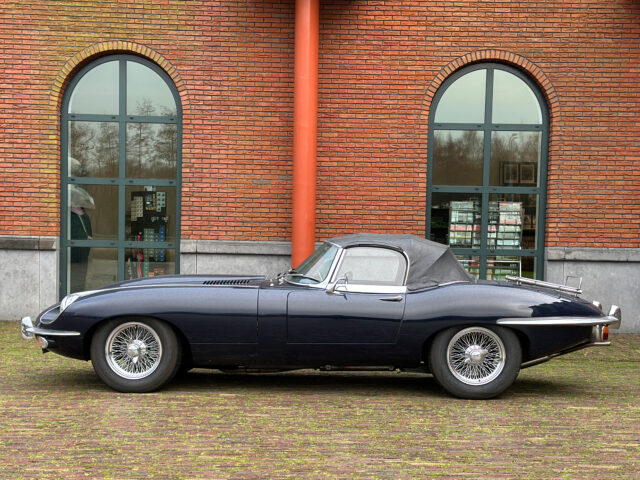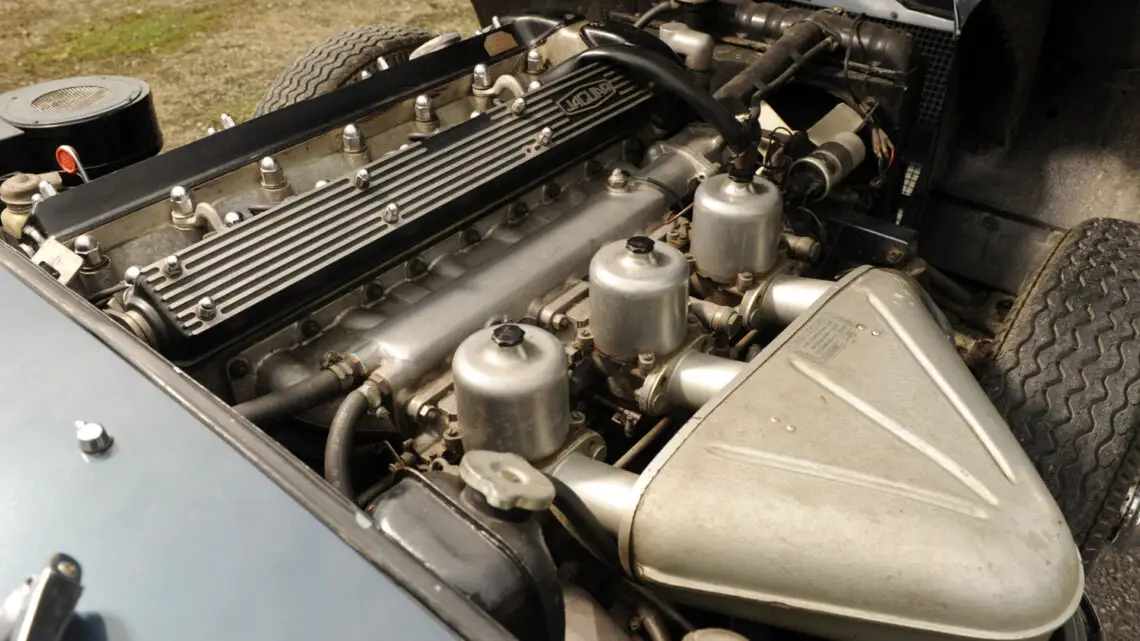Spotted: a Jaguar E-Type in the wild
The spotted specimen
The Jaguar E-Type is an iconic classic that needs little further explanation. You may still see them driving in the summer months, but in the winter they are usually safe, clean and dry in the garage. If not this one, which our colleague Bart came across in the courtyard of the Louwman Museum. In that courtyard, museum visitors may park if they come to the museum in a car 40 years old or older. So an appropriate parking space for this stylish classic.
Owner and E-Type together for a long time
This Jaguar E-Type is extra special because it is original Dutch! The connoisseur may have already seen that from the license plate. The M was not then reserved for motorcycles. The Jaguar was delivered new in 1970, but something else stands out about the dates given by the RDW. In fact, the Jaguar has been with its current owner since 1974! Something else that stands out is that, according to the RDW, this one should be red.



Jaguar E-Type with 4.2-liter six-in-line
The RDW does not give a specific type designation and hardly any technical data are even entered. There is a six-cylinder gasoline engine under the graceful hood, but that was true of every Jaguar E-Type until the arrival of the Series 3. Fortunately, the 1970 construction year provides a clue. In that case, the 4.2-liter six-in-line will be in the front anyway, an engine known to those in the know as the XK. In the 1970 Jaguar E-Type, it produced 195 kW (265 hp) and 385 Nm of torque. With that, the car reached 100 km/h in 7.0 seconds and went on to 243 km/h.

Jaguar E-Type Series 2
Built in 1970, this Jaguar E-Type is one of Series 2, produced from 1968 to 1971. The Series 2 can be distinguished from the first model mainly by the headlights, which no longer had a glass canopy. This was necessary to comply with automotive lighting regulations in North America, but Jaguar applied it to all E-Types worldwide. Less noticeable are the slightly larger rear bumper and the larger front taillights and turn signals, which were now placed under the bumpers instead of above them. A total of 18,809 Jaguar E-Type Series 2 were produced.




